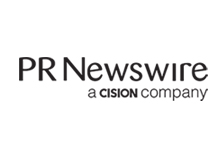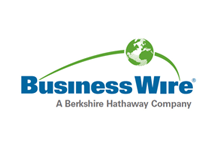Hospital Practices Increase Costs of Medicines for Patients & Employers, New Report Shows
WASHINGTON, Feb. 4, 2021 /PRNewswire/ -- A new report from the Pharmaceutical Research and Manufacturers of America (PhRMA) uncovers the system of incentives that lead hospitals to drive up costs for patients and employers by marking up the price of medicines. While the supply chain for medicines purchased at pharmacies has been well documented, little information is available about the distribution and pricing of medicines administered in the hospital outpatient setting.
The report sheds light on this critical but poorly understood part of the market for prescription drugs, explaining how the system routinely rewards hospitals for extracting two to three times more revenue from the sale of a medicine than the company who discovered and made it. Specifically, the report documents how hospital markups, consolidation, the site of care in which a medicine is administered and the 340B program impact the cost of medicines and health care spending.
"Many actors - including hospitals, insurers and other middlemen - influence what patients pay out of pocket for prescription medicines. In recent years, nearly half of spending on brand medicines went to someone other than the research companies that developed the medicines," said Stephen J. Ubl, president and chief executive officer of PhRMA. "This new report brings transparency to the role hospitals often play in determining the cost of medicines and ultimately what patients pay out of their own pockets."
Key findings from the report include:
-- Hospitals often inflate the cost of medicines administered to
commercially insured patients in outpatient settings. This has led to
commercial health plans reimbursing hospitals at rates nearly 250% of
the amount paid by the hospital to acquire the medicine, a practice that
has been documented by other independent reports. These routine markups
increase costs for patients and employers and the amount a hospital
receives from administering a medicine may exceed the net revenue earned
by the manufacturer who researched and developed the medicine. The way
in which hospitals set their prices is often opaque and unclear to
patients, whose own out-of-pocket costs can be influenced by the rates
charged by the hospital.
-- Hospital consolidation leads to increased prices. Through consolidation,
hospitals use their market power to extract higher payment rates from
commercial health plans, driving up costs for employers, health plans
and patients. Hospital consolidation often forces patients to shift
their care to less efficient, more costly settings without any
corresponding increase in the quality of care.
-- Hospital profits generated through the 340B program also incentivize
consolidation and more costly care. Congress created the 340B program to
help vulnerable patients access medicines at safety-net hospitals and
certain clinics. However, the program has evolved to financially benefit
large hospital systems, for-profit pharmacies and other middlemen at the
expense of patients. Hospitals buy deeply discounted medicines and then
charge both uninsured patients and health plans higher prices, pocketing
the difference. The ability to generate a profit has spurred 340B
hospitals to purchase independent physician offices to expand the
program and bring in more profit by registering these entities as 340B
offsite outpatient sites. This consolidation has contributed to
explosive growth in the program. The number of registered 340B offsite
outpatient sites increased from 34 in 1994 to more than 28,000 in 2020,
but there has not been similar growth in care for vulnerable patients.
"The status quo isn't working for patients, and we want to help fix it," continued PhRMA's Stephen Ubl. "We are going to continue to highlight the ways middlemen, underregulated programs and a broken system contribute to the pain patients feel when it comes to paying for their prescription drugs. We stand ready to work with all policymakers and all health care stakeholders to develop a holistic solution, because that's the only way to make a real difference for patients."
This new report expands on a previous report that looked at how the flow of payments through middlemen in the pharmaceutical supply chain affects the costs of prescription medicines that patients pick up at the pharmacy.
View the full analysis on hospital practices here.
About PhRMA
The Pharmaceutical Research and Manufacturers of America (PhRMA) represents the country's leading innovative biopharmaceutical research companies, which are devoted to discovering and developing medicines that enable patients to live longer, healthier and more productive lives. Since 2000, PhRMA member companies have invested nearly $1 trillion in the search for new treatments and cures, including an estimated $83 billion in 2019 alone.
Connect with PhRMA
For information on how innovative medicines save lives, please visit:
www.PhRMA.org
www.Innovation.org
www.MAT.org
www.Facebook.com/PhRMA
www.Twitter.com/PhRMA
View original content to download multimedia:http://www.prnewswire.com/news-releases/hospital-practices-increase-costs-of-medicines-for-patients--employers-new-report-shows-301222638.html
SOURCE Pharmaceutical Research and Manufacturers of America (PhRMA)





